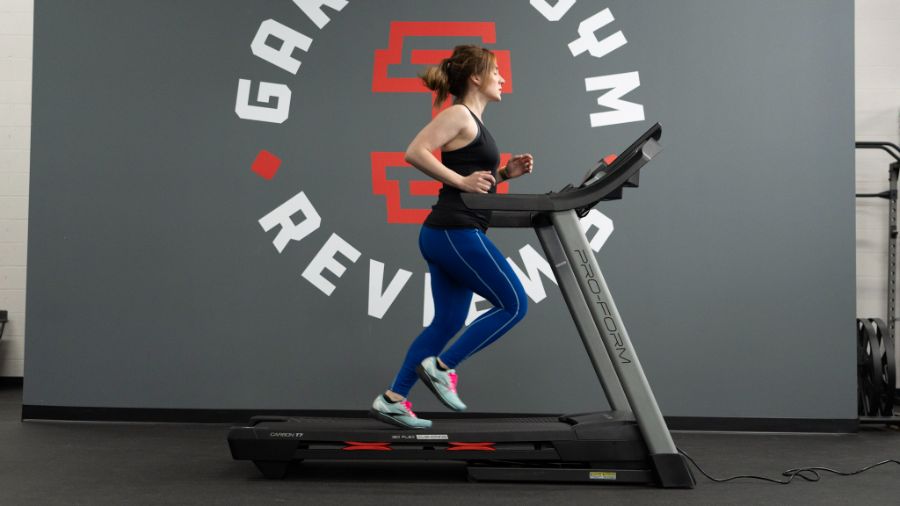We test and review fitness products based on an independent, multi-point methodology. If you use our links to purchase something, we may earn a commission. Read our disclosures.
If your cardio routine could use a little variety, or if you’ve hit a plateau in your fitness results, you might consider spicing up your treadmill training sessions with some interval workouts.
Interval training, which alternates low-intensity effort with short bursts of higher-intensity energy output, maximizes your sweat sessions in a “keep your body guessing” kind of way. Compared to steady-state cardio, intervals alter your heart rate by changing the demands on your body.
Wondering how to use a treadmill for interval training? Let’s dive into the nitty gritty.
What is Treadmill Interval Training?
When someone mentions interval training, you might immediately think of a HIIT treadmill workout, or HIIT as it’s frequently called. High-intensity interval training is famous for its high-energy, sweat-inducing workouts that have motivated athletes for years. The challenging and intense exercise is sure to leave you proud of yourself, but not all interval training has to be HIIT.
Sure, you want to leave your workout feeling stronger than you were going into it. However, interval training doesn’t have to leave your tank on “E” every single time.
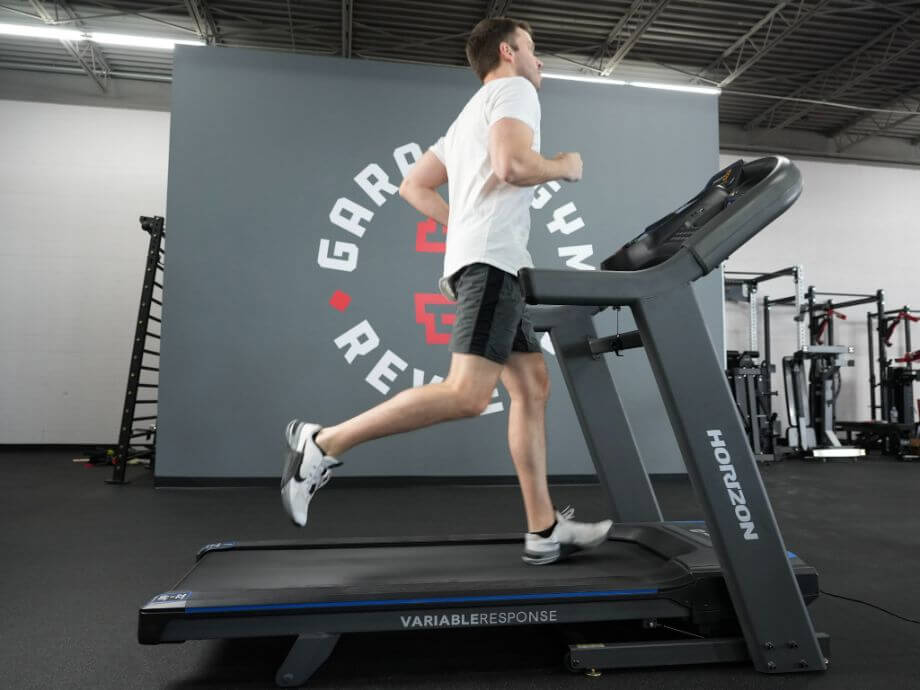
Interval training simply alternates between two degrees of effort. A change in effort while on a treadmill can come from varying speeds, incline workouts, or adding resistance via dumbbells or even a weighted vest. So for instance, alternating between walking and running is interval training, as well as walking at a steady pace but cranking up the incline for a few minutes at a time.
Interval training comes with a variety of benefits, both for your health and fitness goals. If properly implemented into a well-balanced fitness routine, you’re likely to see results in more ways than one. Benefits include:
Increased Aerobic Capacity
The higher intensity of interval training can help increase oxygen consumption and efficiency, helping to develop your aerobic capacity.
Prevents Boredom
It’s no secret that mileage runs on a treadmill can get a little boring. However, when it comes to interval training, you just don’t have time to get bored. Since each interval only requires your attention for a short time, you’re more likely to stay engaged during your workout.
Supports Weight Loss
Compared to a steady-state cardio workout of the same length, an interval workout will most likely burn more calories as the short bursts of more intense exercise create more demand on your body. Research has also demonstrated that HIIT can help speed up your metabolism by increasing the production of your human growth hormone (HGH).
More Time Efficient
Interval training sessions pack a punch, making them more time-efficient. Research supports the idea that even just 10 minutes of high-intensity effort during a 30-minute workout a few times a week can significantly impact your overall fitness.
Ways to Do It
Interval training focuses on changes in perceived effort, but there are several ways to demand varying levels of effort from your body. You can increase your speed, resistance, or incline to increase the intensity of your work intervals.
Vary Your Speed
Varying your speed between exercises is a common technique for implementing interval work. Alternating between a slower and faster pace, whether walking, jogging, or sprinting, can target different heart rates.
Start with a quality warm-up and then find your base speed (a speed you can keep up for an extended period of time). Then increase your speed to a pace you will hold for a short burst of work. Generally, the faster your pace, the shorter the work interval timeframe.
Vary Your Incline
We’ve all felt the burn of an uphill climb. Adjusting your incline for a treadmill incline workout is a great way to implement interval training on this cardio machine.
When using elevation changes to design your interval treadmill workout, consider starting with a warm-up at a 1.0 incline. Then, increase your incline (perhaps to 1.5 or 2) without changing your speed for one minute. Once the minute is up, return to a 1.0 incline for lower-intensity effort and active recovery before you ramp up for your next work interval.
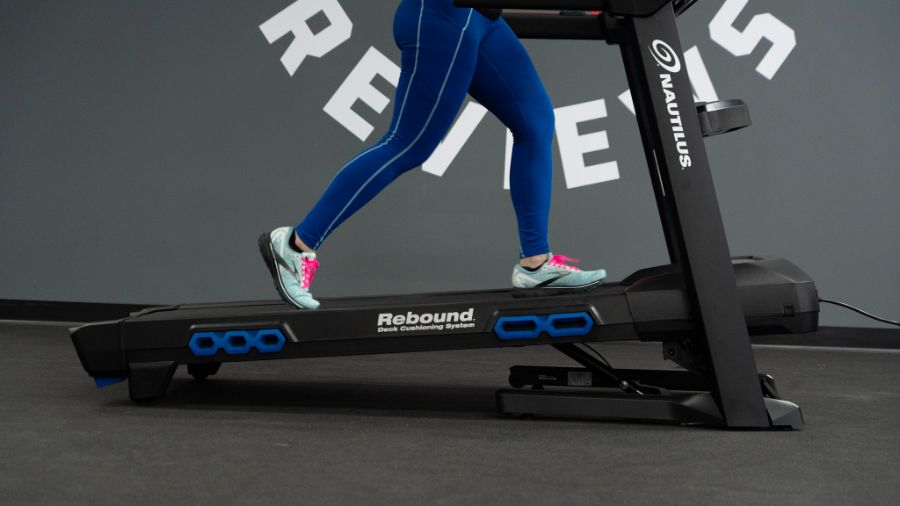
You might choose to increase your incline even more to mirror steeper hills. If you’re imagining yourself on the rolling hills of Missouri, you might bump your incline to a 4.0 or more. You might even decide to extend your work interval for longer than a minute. No matter your incline, your speed will remain the same throughout your workout. Changing your elevation will make your body work harder, no matter your pace.
Add Weight
Adding dumbbells to your treadmill workout can help increase the muscle groups activated during your training session. After a solid warm-up, find your base pace. It might be a brisk walk or a run.
After a set time, pause the treadmill (safety first!) to step off the running deck and position yourself for strength training exercises. You might choose to focus on your upper body, maybe you decide to hold the dumbbells for walking lunges, or maybe you go for a mix of both. Perhaps you grab a kettlebell for a round of squats. The options are endless!
Once you’ve finished that round of weight training, hop back on the treadmill and start the next interval at your base pace.
Workout Structure
While the basic workout structure of treadmill interval training remains the same, the workout plans you can design are endless. Of course, a quality warm-up and cool-down are essential, but the middle of your treadmill interval workout can take many different forms.
The cool thing about treadmill intervals (well, all treadmill workouts, really) is the ability to design them to your specific needs and fitness level. Running workouts are ideal for individualized training.
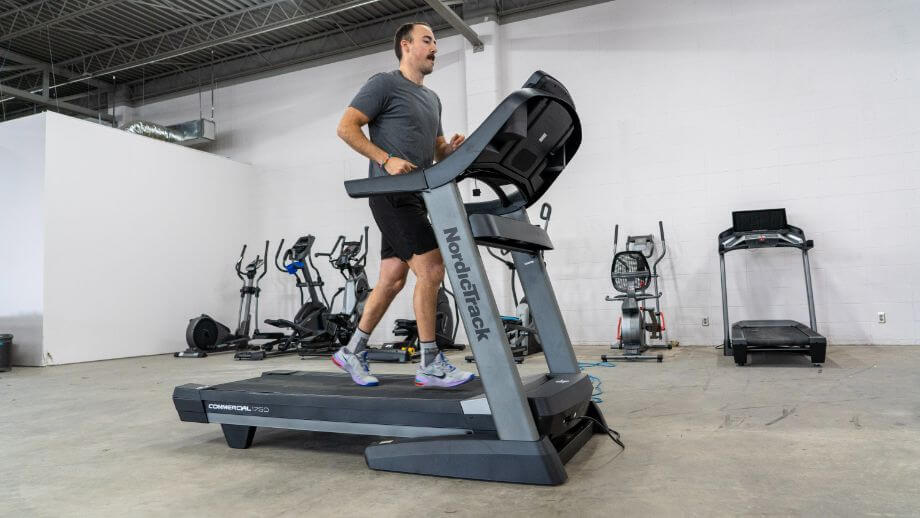
You know your body better than anyone else could. You know how to challenge yourself, and you know your limits. Whether it’s hill intervals, sprint intervals, or intervals that incorporate strength training, don’t sell yourself short. Enjoy the challenge that interval training brings, and get your sweat on!
If you need guidance, a personal trainer is a great teammate when safely exploring a new type of workout.
How Often to Use Interval Training
Interval training sessions can do wonders for your fitness goals, but it’s important to remember that they can be demanding sessions. Your body will need time to adapt to the demand that this style of training expects. Interval sessions take a lot of energy and put a great deal of stress on your body, so adequate recovery between workouts is critical.
If you’re just beginning, start with one interval session per week and gradually work your way up. Most personal trainers recommend no more than three interval workouts per week to get adequate rest and recovery between sessions.
RELATED: How to Use a Treadmill
HIIT Treadmill Workout Examples
Want to try a HIIT workout but not sure where to start? Give one of these sweat sessions a try! Consult our RPE chart—or rating of perceived exertion—to gauge what your effort level should be.
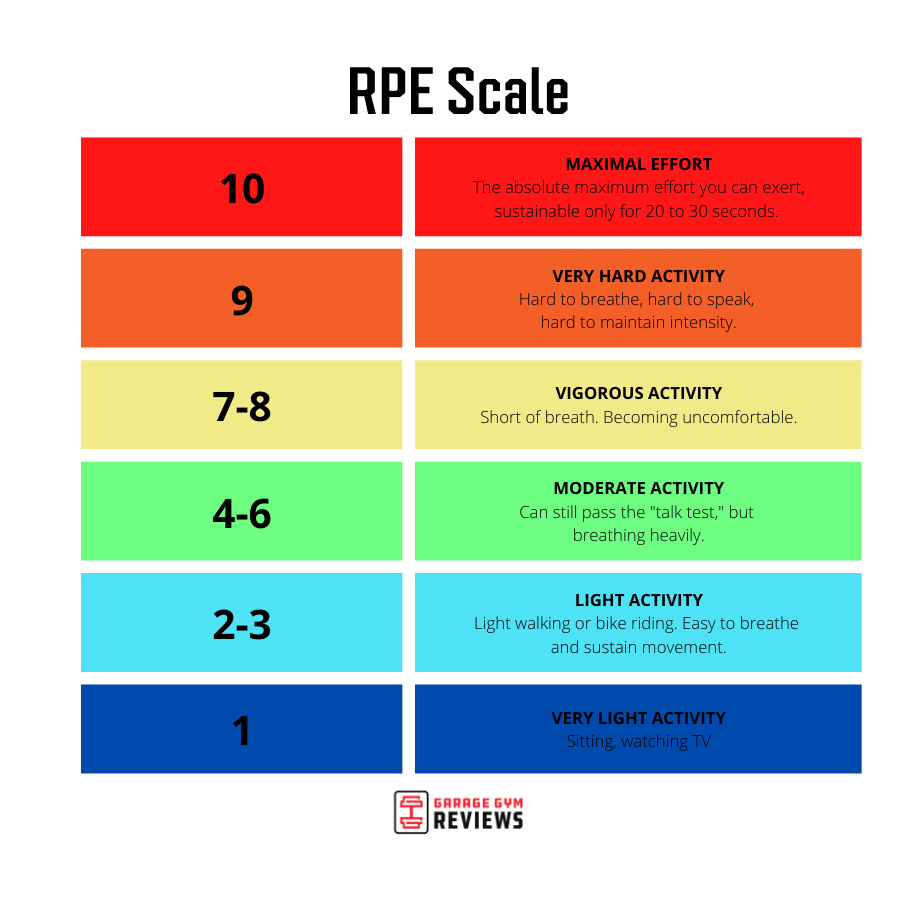
Adjusted Speed Interval
- Start with a warm-up. Consider a light jog for five minutes clocking in at 3-4 RPE.
- Begin your intervals with a 30-second sprint, increasing your speed to reach an 8-9 RPE.
- Decrease your speed for a 2-minute recovery at an easy pace, 3-4 RPE.
- Repeat 3-5 rounds.
- Finish with a cool-down. Consider a brisk walk for five minutes.
Adjusted Incline Interval
- Warm up with a brisk walk (3 RPE) on a 1.0 incline for three minutes.
- Increase your speed to your base pace (4-5 RPE) at the 1.0 incline for two minutes.
- Increase the treadmill’s incline to 3.0 for 90 seconds (do not adjust speed).
- Lower the treadmill’s incline back to 1.0 for two minutes.
- Repeat 4-5 times.
- Cool down with a brisk walk for five minutes.
Intervals With Strength Training
- Warm up with a brisk walk for five minutes.
- Increase the speed for one minute, bringing you to a strong walk (4-5 RPE).
- Pause the treadmill and safely step off. Complete 8 to 12 reps of bicep curls, tricep extensions, or overhead press.
- Return to the treadmill and bring the speed back to your one-minute walk.
- Repeat 4-5 times.
- Cool down with a brisk walk for three minutes.
Final Thoughts on How to Use a Treadmill for Interval Training
Running workouts come in all shapes and sizes and can be tailored to fit your individual needs. Interval workouts are no different. Whether you aim to improve your overall wellness or boost your fitness level, running intervals can be an excellent way to bring you closer to your goals. Short bursts of increased effort followed by a lower-intensity recovery period can help to build endurance and strength.
- Not all interval training has to be high-intensity interval training.
- You can adjust your speed, incline, or resistance to implement work intervals.
- Adequate muscle recovery between workouts is key for interval training. Therefore, aim for no more than three interval training sessions per week.
Treadmill Interval Training FAQs
How do you do interval training on a treadmill?
In general, interval training on a treadmill includes a warm-up followed by structured work intervals and a solid cool-down. During your intervals, you will alternate high-intensity output for a short amount of time with lower-intensity effort for longer periods of time. For example, this may look like a 30-second sprint followed by a light jog for one minute. Or perhaps a one-minute running on a steep incline followed by three minutes of brisk walking on a flat pitch.
Does interval training on a treadmill work?
If by “work” you mean provides health benefits, yes, it sure does! The benefits of treadmills have a long list and interval training adds even more. Like any workout, you get what you put in when training intervals on a treadmill. Interval sessions can help build endurance and aerobic capacity in one powerful, fun workout.
How do you do interval training on a treadmill for beginners?
If you’re a beginner, you might consider starting with one interval workout per week. Allowing yourself to have adequate rest periods between interval sessions is critical for maximizing your workouts and reducing your risk for injury. If you’re not sure where to begin, you might consider working with a personal trainer.
Is interval training on a treadmill good for weight loss?
If weight loss is your goal, interval training can be a beneficial addition to your fitness routine. You may even see faster results compared to steady-state cardio training because interval training tends to burn more calories over the same period of time. However, always keep in mind that proper nutrition is key to any weight loss or bodyweight recomposition goal.
Further reading

How many calories do you burn in a day? Get the inside information on how your height, weight, gender, and activity affect your daily burn. Read more

Different products are best for different goals. Find out what the best pre-workout for muscle gain is here! Read more

A sports dietitian discusses the pros and cons of choosing a protein bar vs shake for increasing protein intake. Read more

Thinking about trying Foodvisor? Don’t download the app until you read our Foodvisor review. Read more

